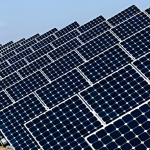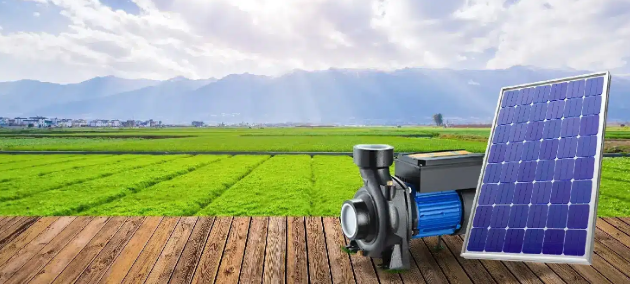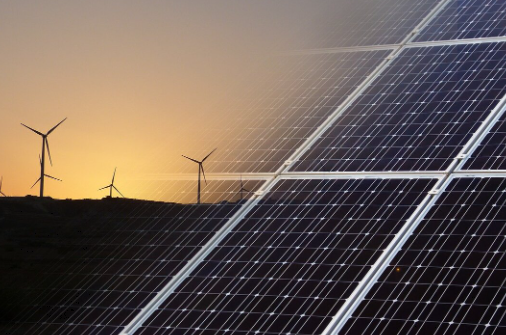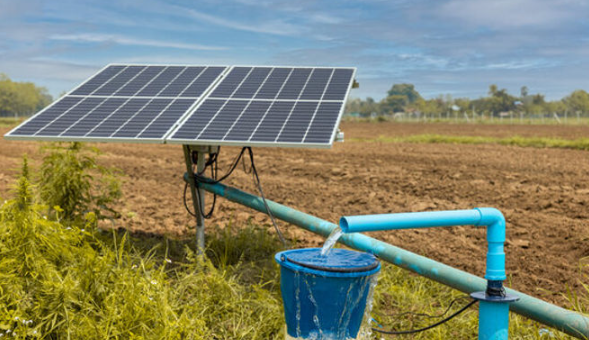
How Net Metering Supports Sustainable Energy and the Environment
January 7, 2025
Why Lithium-Ion Batteries Are Considered a Gamechanger
February 18, 2025Choosing an efficient and cost-effective pumping system becomes critical as water remains essential for agriculture, industry, and daily life. In recent years, solar pumping systems have gained significant attention as an alternative to traditional ones. But how do they compare?
Let’s dive into both systems’ key differences, advantages, and considerations.
What Are Solar Pumping Systems
Solar pumping systems use solar panels to generate electricity, which powers the pump. These systems are especially suitable for remote areas with abundant sunlight but limited access to electricity. The technology converts solar energy into mechanical energy to lift or transport water for various applications, such as irrigation, livestock watering, and household needs.
What Are Traditional Pumping Systems?
Traditional pumping systems are powered by electricity or fuel, such as diesel or gasoline. These pumps have been widely used for decades and are effective in areas with established electrical grids or easy access to fuel supplies.
Key Comparisons Between Solar and Traditional Pumping Systems
1. Energy Source
- Solar Pumping runs entirely on renewable solar energy, eliminating dependence on external power sources. This makes it eco-friendly and sustainable.
- Traditional Pumping: This relies on grid electricity or fuel, which can lead to higher operational costs over time due to fluctuating fuel prices and energy bills.
2. Operational Costs
- Solar Pumping: The operational costs are minimal once installed because sunlight is free. Over time, it proves to be a cost-effective solution for pumping water.
- Traditional Pumping requires regular fuel or electricity expenditures, leading to higher operational costs in the long run.
3. Initial Investment
- Solar Pumping: The upfront cost, including the solar pump price in Pakistan, can be relatively high compared to traditional systems. However, government subsidies and long-term savings on energy bills can offset the initial expense.
- Traditional Pumping: The initial cost is generally lower, but the ongoing fuel or electricity expenses can increase quickly.
4. Environmental Impact
- Solar Pumping: Produces no greenhouse gas emissions, making it an environmentally friendly option. It aligns with global efforts to combat climate change and promote renewable energy.
- Traditional Pumping: Emits carbon dioxide and other pollutants, contributing to environmental degradation and air pollution.
5. Maintenance
- Solar Pumping: Requires minimal maintenance. Solar panels need occasional cleaning to ensure optimal performance, but the absence of fuel-based components reduces wear and tear.
- Traditional Pumping: Requires regular servicing and maintenance due to fuel engine components, which can wear out over time.
6. Performance in Remote Areas
- Solar Pumping: Ideal for remote areas where grid electricity is unavailable. It provides an independent water pumping solution for agriculture and households in rural regions.
- Traditional Pumping: This may not be feasible in areas far from the power grid, as transporting fuel can be expensive and inconvenient.
7. Longevity
- Solar Pumping: Solar water pumps generally last 20-25 years and require proper maintenance, making them a reliable long-term solution.
- Traditional Pumping: The lifespan depends on the fuel engine and regular maintenance, which can be costly.
Which System Is Right for You?
Choosing between solar pumping and traditional systems depends on various factors:
- Location: Areas with abundant sunlight benefit more from solar systems.
- Budget: Evaluate long-term costs versus initial investment.
- Environmental Goals: Solar pumps are better for eco-conscious individuals or businesses.
- Water Needs: Consider the daily water requirements and the system’s capacity.
Both systems have their uses, but solar pumping has lower costs, energy independence, and eco-friendliness. As technology improves and the solar pump price in Pakistan becomes more affordable, it’s becoming the go-to choice for sustainable water solutions.
Contact Max Power Pakistan for trusted solar pumping solutions and experience the difference.




